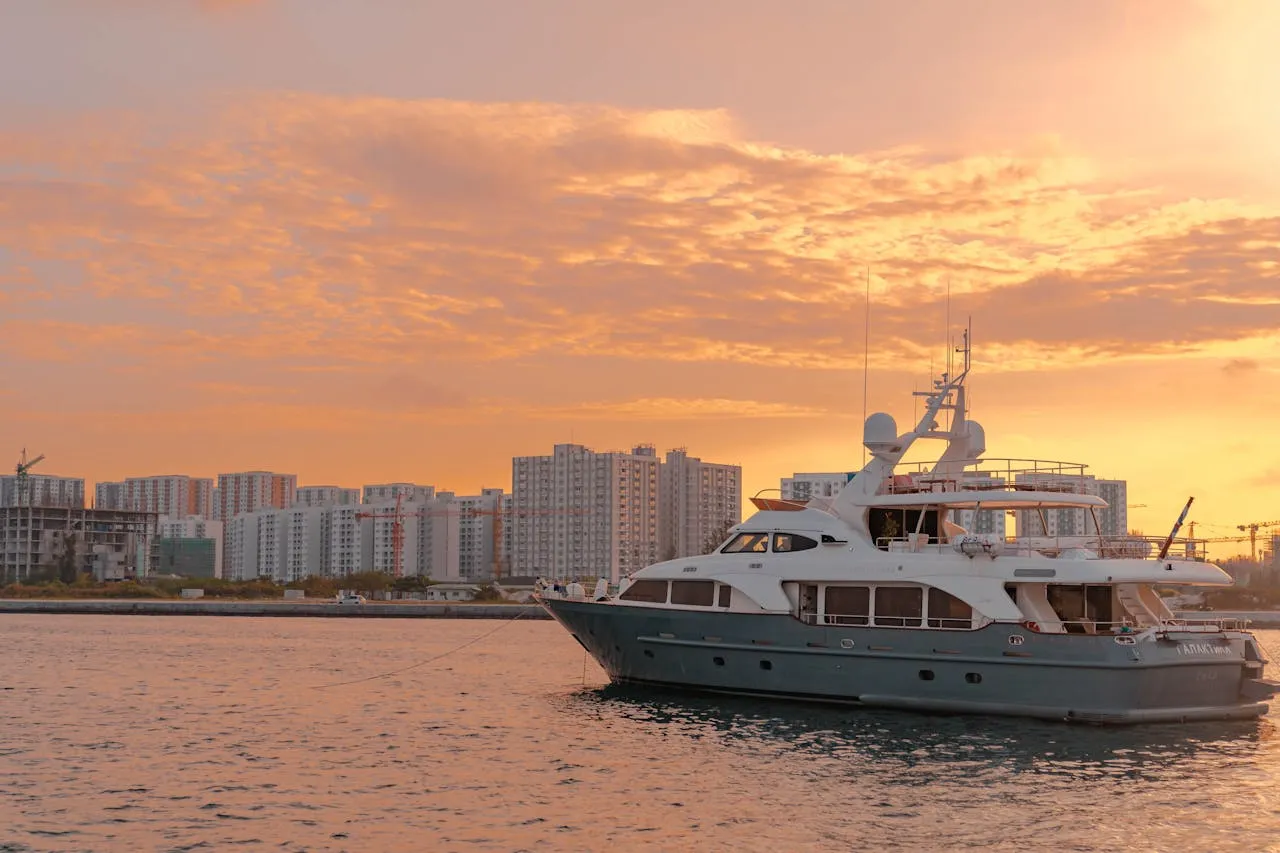Login
I Have Read And Agree To The
Login
I Have Read And Agree To The
Register
I Have Read And Agree To The
Change Password
Welcome to Yachttrading.com!

Congratulations on changing your password successfully!

Congratulations on changing your password successfully!
When cruising at night or in low visibility conditions, the importance of navigation lights cannot be overstated. They serve as ‘signal lights’ to inform other vessels of your location, much like the ‘eyes’ of a yacht in the darkness. Proper use and maintenance of these navigation lights are not only a legal requirement but also crucial for ensuring water safety. In this yachting guide, Yachttrading will take you through a detailed explanation of how to safely use yacht navigation lights.

Many yacht owners initially mistake navigation lights for mere ‘lighting equipment,’ but in reality, each navigation light serves a unique function and purpose. Whether navigating at night or in low-visibility conditions such as fog or heavy rain, navigation lights are essential tools for preventing collisions.
They communicate critical information about your yacht's direction, size, and navigation status to other vessels through colour, position, and beam range. In a way, navigation lights serve as the ‘traffic lights’ of the waterborne transportation system—indispensable.
Yacht navigation lights are not limited to a single type but are categorised based on their specific purposes. To ensure that the lights can be clearly identified from a distance of at least two nautical miles, we recommend selecting products certified by maritime authorities. Below are several common types of navigation lights and their functions:
Side lights: Installed on the port and starboard sides of the yacht's bow to indicate the direction of travel
Port side (left) is red
Starboard side (right) is green
Stern light: Located at the stern, it helps vessels approaching from behind identify your position
All-round white light: Used when the yacht is anchored or at anchor, it is visible in all directions
For example, if you see a vessel displaying both red and green lights, it indicates that it is approaching head-on, and you must determine the evasion direction in advance.
Not all yachts use the same navigation light configuration. Power yachts, sailboats, and rowboats have different requirements for navigation light installations. Additionally, the size of the yacht and the operational water area (such as inland lakes or coastal waters) also influence the type of lights to be equipped and their installation methods.
Therefore, understanding the navigation light regulations applicable to the yacht you are operating is the basic responsibility of every boat owner. It is recommended to carefully review the user manual or relevant regulations before setting sail to ensure compliance with standard requirements.
To ensure that yacht navigation lights function properly when needed, we recommend the following routine operations and maintenance:
Pre-sailing inspection: Before departure, ensure that all navigation lights are functioning properly
Adhere to time regulations: Navigation lights must be activated from sunset to sunrise
Low visibility weather lighting: Navigation lights must be activated during foggy or rainy weather conditions
Regular maintenance: Replace aged or damaged bulbs promptly and carry spare lighting equipment for emergencies.
Avoid light interference: Avoid using spotlights or strong lighting at night to prevent interference with other vessels identifying your navigation status.
Remember, yachts do not have clearly defined lanes like cars; the ‘traffic order’ on the water relies on the clear identification provided by navigation lights.
The U.S. Coast Guard and local maritime regulatory agencies have established navigation light usage standards with a clear purpose: to ensure the safety of all water users. As a yacht operator, you need to know which factors influence the type of lights you should use:
Your yacht's length and tonnage
The type of vessel (powerboat, sailboat, etc.)
The type of waterway you are navigating (e.g., coastal waters, inland lakes, etc.)
Regardless of the waterway, you should always choose navigation light equipment that is reliable and officially certified. Many accidents could have been prevented with a properly functioning lighting system.
If you are unsure about which lights your yacht should be equipped with, it is essential to consult the manual or seek professional advice. Our platform also offers navigation safety consultations and recommendations for lighting equipment selection. Feel free to contact us for assistance.
Mastering the proper use of yacht navigation lights is a must for every boat owner. Proper configuration, correct activation, and regular maintenance are not just about avoiding fines—they are about ensuring your own safety. Don’t wait until an accident occurs to regret it. Starting today, let’s approach every navigation light with a rigorous attitude.
Tags :
 Leave the comment
Leave the commentQuestion Type
Question Type
Question In Detail
Relevant Recommendation

23 July 2025
Among the many types of boats that sail the seas, catamarans and yachts each have a unique design and function. While they both fulfil the needs of water recreation and cruising, there are significant differences between the two, from their construction to their uses. As a platform specialising in online yacht pricing consultancy, trading, shipping and maintenance, Yachttrading is here to discuss the topic ‘What's the difference between a catamaran and a yacht?’ in detail.
 5
5 0
0Type Of Feedback
Feedback
Contact Information
+244
You have successfully submitted your message, please wait for our contact.
This website uses technical cookies,which are necessary for you to browse it and which help us to provide the service.Withyour consent,we use profling cookies to ofer you an increasingly agreeable browsing experience,to faclitate interaction withour social-media features,and to enable you to receive marketing messages tailored to your browsing habits and interests Toaccept all profiling cookies,click ACCEPTto decline,click REFUSE.
